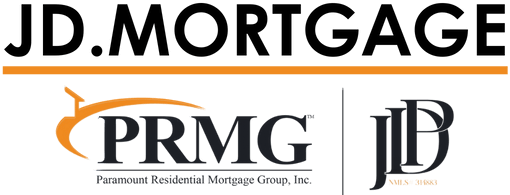
Rate-and-Term Mortgage Refinance
Rate-and-term mortgage refinance is one of the most effective ways for homeowners to reduce their interest rate, shorten their repayment term, or remove costly private mortgage insurance (PMI)—without tapping into home equity for cash. As part of our Mortgage Refinance Guide, this page explains the benefits, eligibility requirements, and step-by-step process for refinancing in 2025, with links to helpful tools like our Mortgage Calculator and loan program pages.
What is a Rate-and-Term Mortgage Refinance?
A rate-and-term refinance replaces your current mortgage with a new one—typically with a lower interest rate, different loan term, or both. Unlike a cash-out refinance, no equity is withdrawn. The main goal is to save money on interest, reduce monthly payments, or pay off the mortgage sooner. You can explore full refinance options in our Loan Options section.
Top Benefits of Rate-and-Term Refinancing
- Lower Interest Rates: Take advantage of lower market rates, reducing total interest paid over the life of the loan. See the latest data at Freddie Mac’s PMMS.
- Shorten Loan Term: Move from a 30-year to a 15-year term to pay off your mortgage faster and save significantly on interest.
- Remove PMI: If your home has gained value, refinancing can eliminate private mortgage insurance, saving you hundreds monthly.
- Switch Loan Types: Convert from an FHA loan to a conventional loan to remove mortgage insurance.
Who Qualifies for a Rate-and-Term Refinance?
Eligibility varies by loan type, lender, and your current mortgage terms. Most lenders look for:
- Stable income and employment
- Acceptable credit history
- Loan-to-value (LTV) within program guidelines
- Debt-to-income (DTI) ratio within limits
For government-backed programs like VA loans or FHA loans, there are often streamlined refinance options that reduce documentation and appraisal requirements.
How the Process Works
- Check Your Current Loan: Review your current mortgage statement and note your interest rate, remaining term, and payoff amount.
- Compare Loan Options: Use our Mortgage Calculator to estimate payments under new terms.
- Submit Your Information: Get started to see personalized refinance options.
- Lock Your Rate: Secure your interest rate once you choose a program.
- Close on Your New Loan: Sign closing documents, pay any closing costs, and start your new repayment schedule.
Costs to Consider
While a rate-and-term refinance can save you money, it comes with closing costs—typically 2% to 5% of the loan amount. Learn more from the Consumer Financial Protection Bureau on what to expect. These costs can be paid upfront or rolled into the loan.
When to Consider Refinancing
- Your current rate is higher than market rates by at least 0.5%.
- You want to remove PMI or switch from FHA to conventional financing.
- You plan to stay in your home long enough to reach the break-even point.
Refinancing with Different Loan Programs
The JD.Mortgage team offers refinance options across multiple programs:
- VA Rate-and-Term Refinance
- FHA Rate-and-Term Refinance
- Conventional Rate-and-Term Refinance
- Jumbo Rate-and-Term Refinance
Get Started
Explore your rate-and-term refinance options now and see how much you could save. Request your personalized quote today.
Other Loan Programs We Offer
- VA Loans
- FHA Loans
- USDA Loans
- DPA (Down Payment Assistance)
- Investment Property Loans
- Non-QM Loans
- HELOCs
- Second Mortgages
- Reverse Mortgages
- Construction Loans
Frequently Asked Questions
What is the main difference between rate-and-term and cash-out refinancing?
A rate-and-term refinance changes your interest rate, loan term, or both—without taking cash from your home equity. A cash-out refinance provides a lump sum of cash by using your home’s equity.
How much can I save with a rate-and-term refinance?
Savings depend on your current interest rate, new rate, loan balance, and term. Use our Mortgage Calculator to estimate potential savings.
Do I need an appraisal for a rate-and-term refinance?
In most cases, yes—unless you qualify for a streamlined refinance program like VA IRRRL or FHA streamline refinancing, which may waive the appraisal.
For a complete guide to all refinance options, see our Mortgage Refinance Guide.

